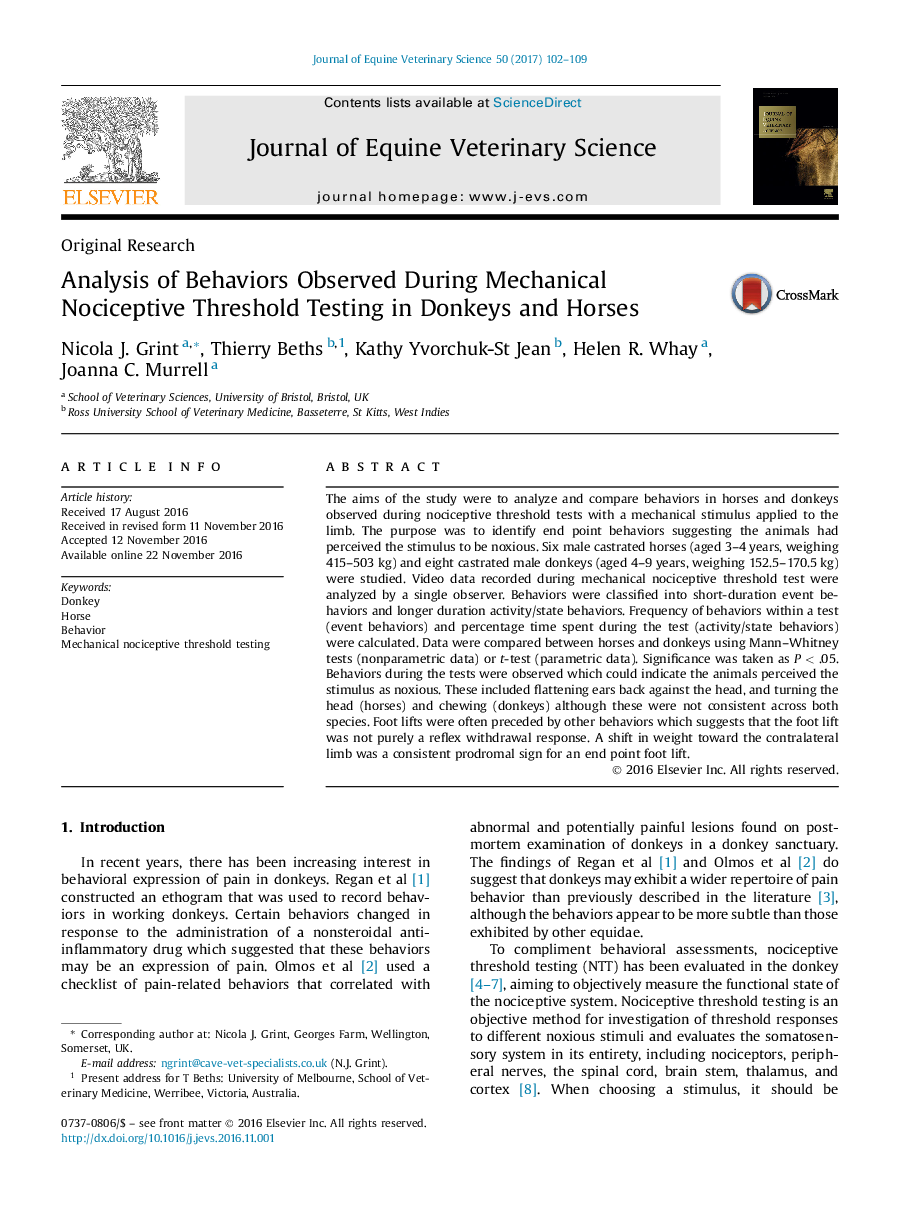| کد مقاله | کد نشریه | سال انتشار | مقاله انگلیسی | نسخه تمام متن |
|---|---|---|---|---|
| 5535561 | 1551550 | 2017 | 8 صفحه PDF | دانلود رایگان |
- We compared behaviors in donkeys and horses and videoed, while a noxious stimulus applied.
- Behaviors during tests were observed which indicated the animals perceived the stimulus as noxious.
- Foot lifts were a consistent end point.
- Other behaviors preceded the foot lift suggesting it was not a reflex withdrawal response.
The aims of the study were to analyze and compare behaviors in horses and donkeys observed during nociceptive threshold tests with a mechanical stimulus applied to the limb. The purpose was to identify end point behaviors suggesting the animals had perceived the stimulus to be noxious. Six male castrated horses (aged 3-4Â years, weighing 415-503Â kg) and eight castrated male donkeys (aged 4-9Â years, weighing 152.5-170.5Â kg) were studied. Video data recorded during mechanical nociceptive threshold test were analyzed by a single observer. Behaviors were classified into short-duration event behaviors and longer duration activity/state behaviors. Frequency of behaviors within a test (event behaviors) and percentage time spent during the test (activity/state behaviors) were calculated. Data were compared between horses and donkeys using Mann-Whitney tests (nonparametric data) or t-test (parametric data). Significance was taken as P < .05. Behaviors during the tests were observed which could indicate the animals perceived the stimulus as noxious. These included flattening ears back against the head, and turning the head (horses) and chewing (donkeys) although these were not consistent across both species. Foot lifts were often preceded by other behaviors which suggests that the foot lift was not purely a reflex withdrawal response. A shift in weight toward the contralateral limb was a consistent prodromal sign for an end point foot lift.
Journal: Journal of Equine Veterinary Science - Volume 50, March 2017, Pages 102-109
